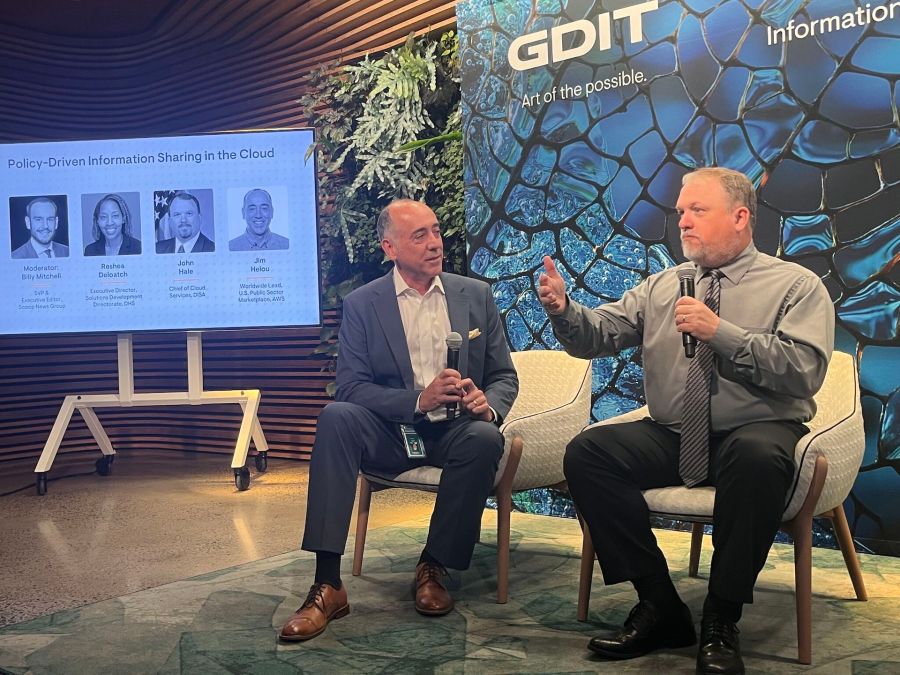Pentagon using AI to modernize legacy code

Antiquated information technology and modern capabilities are colliding at the Defense Department, where officials are using artificial intelligence to try to make old-timey software code more user-friendly for IT modernization.
Much of the DOD’s tech is decades old, which isn’t helpful as the Pentagon pursues cloud migration and other digital transformation efforts.
“We have a lot of legacy applications within the department — I mean a lot,” John Hale, chief of cloud services at the Defense Information Systems Agency, said Thursday during a panel at a GDIT event produced by FedScoop in collaboration with AWS.
“We still have applications that run on mainframes that are critical to day-to-day operations, and the people who wrote those are dead. Right? Point blank. And so, you know, how do you modernize those? How do you facilitate those and move those applications into a more cloud-friendly environment? And we’re using AI, actually, to do that,” he said. “We’re using AI capabilities to actually modernize legacy code that all the people who ever wrote it are long gone. And, you know, it’s not perfect, but it gets us like 80-85 percent of the way there, and then we’re able to manually fill in that last 10 to 15 percent to bring these applications into the 21st century. Right? And that’s a combination of, you know, cloud capabilities, but it’s also a combination of AI and the ability to think outside the box from a leadership perspective.”
But IT modernization isn’t just a technology challenge at the DOD. There are also policy-related hurdles.
“I would say the number one barrier, and I harp on this on a regular basis, is acquisition policy within the department,” Hale said. “We still buy IT as if it was a weapon system. You have to do your planning and your budget cycles in such a way that don’t really facilitate agile capabilities, right? My joke was I just submitted my best [fiscal] ‘26 budget, right? So it’s September of 2024. I just submitted my budget for 2026. And in that budget, I had to submit my FYDP plan, my five-year plan. So not only did I submit my budget for 2026, I had to also plan what I was going to spend all the way through to 2031. In today’s world, with how rapid things are changing and how agile technology and capabilities are, … those are the handcuffs that we’re playing under.”
Rather than trying to predict years ahead of time what the Pentagon’s IT needs will be, it would be better for officials to have more flexibility to buy capabilities on demand, he suggested.
“Those are where I think the procurement laws need to be changed and updated to deal with what we’re doing today because the policies that are in place from a procurement and acquisition aspect are rooted in, you know, 1945 thought. And we’re just, we’re way beyond that,” Hale said.
He noted that he’s working closely with officials in the department’s acquisition arm to try to change problematic policies where they can.
The current way of doing business can be a headache, which causes DOD employees to try to find workarounds, he suggested.
“It is such a hindrance to getting things done within the department that you end up with shadow IT that people are hiding everything in everywhere they can, in order to get the job done. And in the end, it’s only going to make things more vulnerable,” Hale said.



